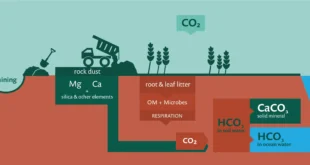- Recently, the Minister of State of Science & Technology presented a national science award to Indian scientists who conducted the world’s first locomotive trials of a deep-sea mining system in the central Indian ocean.
- The Minister presented the award at the 16th Foundation Day of the Ministry of Earth Sciences.
- Also, inaugurated a first-of-its-kind and state-of-art fully automated buoy-based coastal observation and water quality nowcasting system for the Indian Ocean which was developed by Indian National Centre for Ocean Information Services (INCOIS) and It’s the part of India’s Deep Ocean Mission.
Nowcasting System
- In this method, radar and satellite observations of local atmospheric conditions are processed and displayed rapidly by computers to project weather several hours in advance.
- Nowcasting system to benefit various stakeholders, including coastal dwellers, fisherfolk, maritime industry, researchers, and agencies dealing with pollution, tourism, fisheries, and the coastal environment.
Deep Sea Mining
- The part of the ocean that lies below a depth of 200 meters is defined as the deep sea, and the process of extracting minerals from this area is known as deep-sea mining.
- According to International Seabed Authority, an agency under the United Nations Convention on the Law of the Sea (UNCLOS) for monitoring all activities related to mineral resources in the deep sea, the international seabed is the area that lies beyond the limits of national jurisdiction and represents around 50% of the total area of the world’s oceans.
Issues:
- It could severely harm marine biodiversity and ecosystems,
- The digging and gauging of the ocean floor by machines can alter or destroy deep-sea habitats.
- This leads to the loss of species, many of which are found nowhere else, and the fragmentation or loss of ecosystem structure and function.
- It will stir up fine sediments on the seafloor, creating plumes of suspended particles.
- This is exacerbated by mining ships discharging wastewater at the surface.
- Species such as whales, tuna, and sharks could be affected by noise, vibrations, and light pollution caused by mining equipment and surface vessels, as well as potential leaks and spills of fuel and toxic products.
India’s Deep Ocean Mission
- Deep Ocean Mission seeks to develop the technologies required for exploring and, then, extracting minerals in the deep seabed,
- It would develop a manned submersible that can carry three people to a depth of 6,000 meters in the ocean with a suite of scientific sensors and tools.
- It includes an integrated mining system that will be developed to bring up mineral ores from the deep sea.
- It will pursue technological innovations for exploration and conservation of deep-sea biodiversity through “bio-prospecting of deep-sea flora and fauna and studies on sustainable utilization of deep-sea bio-resources.
- The mission will seek to explore the prospects of deriving energy and freshwater from the ocean through “studies and detailed engineering design for offshore ocean thermal energy conversion (OTEC)-powered desalination plants.
SOURCE: THE HINDU,THE ECONOMIC TIMES,MINT
 Chinmaya IAS Academy – Current Affairs Chinmaya IAS Academy – Current Affairs
Chinmaya IAS Academy – Current Affairs Chinmaya IAS Academy – Current Affairs



